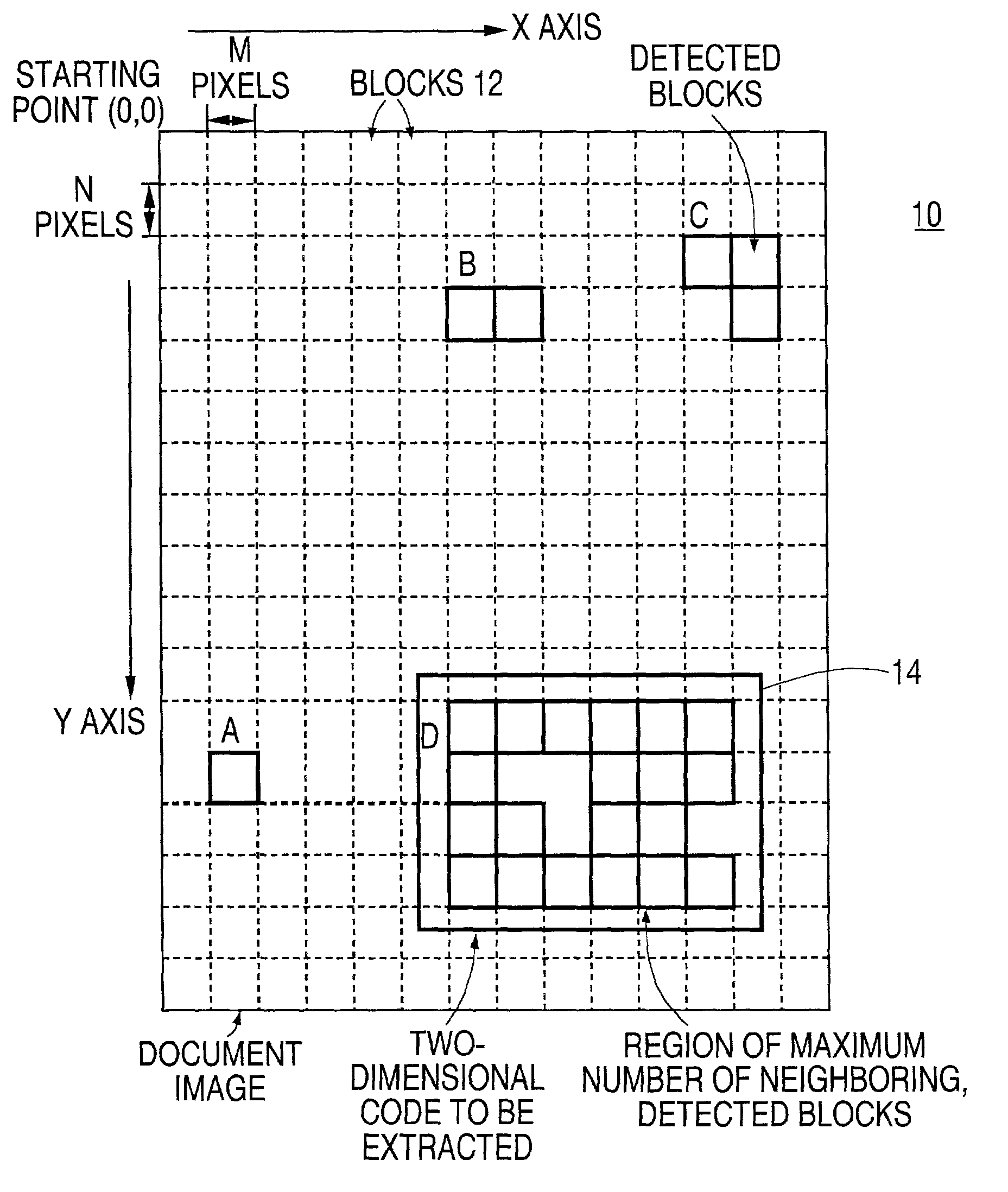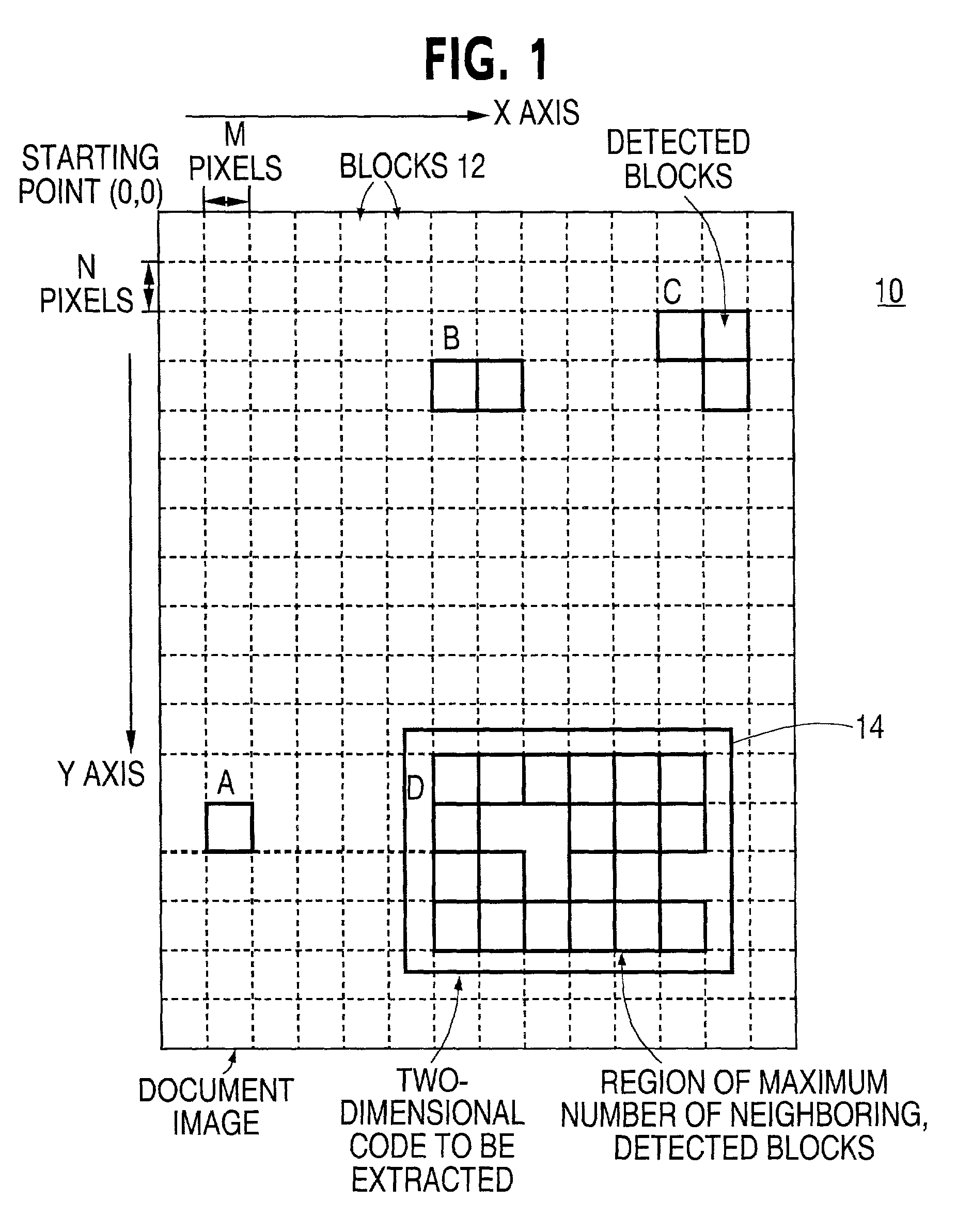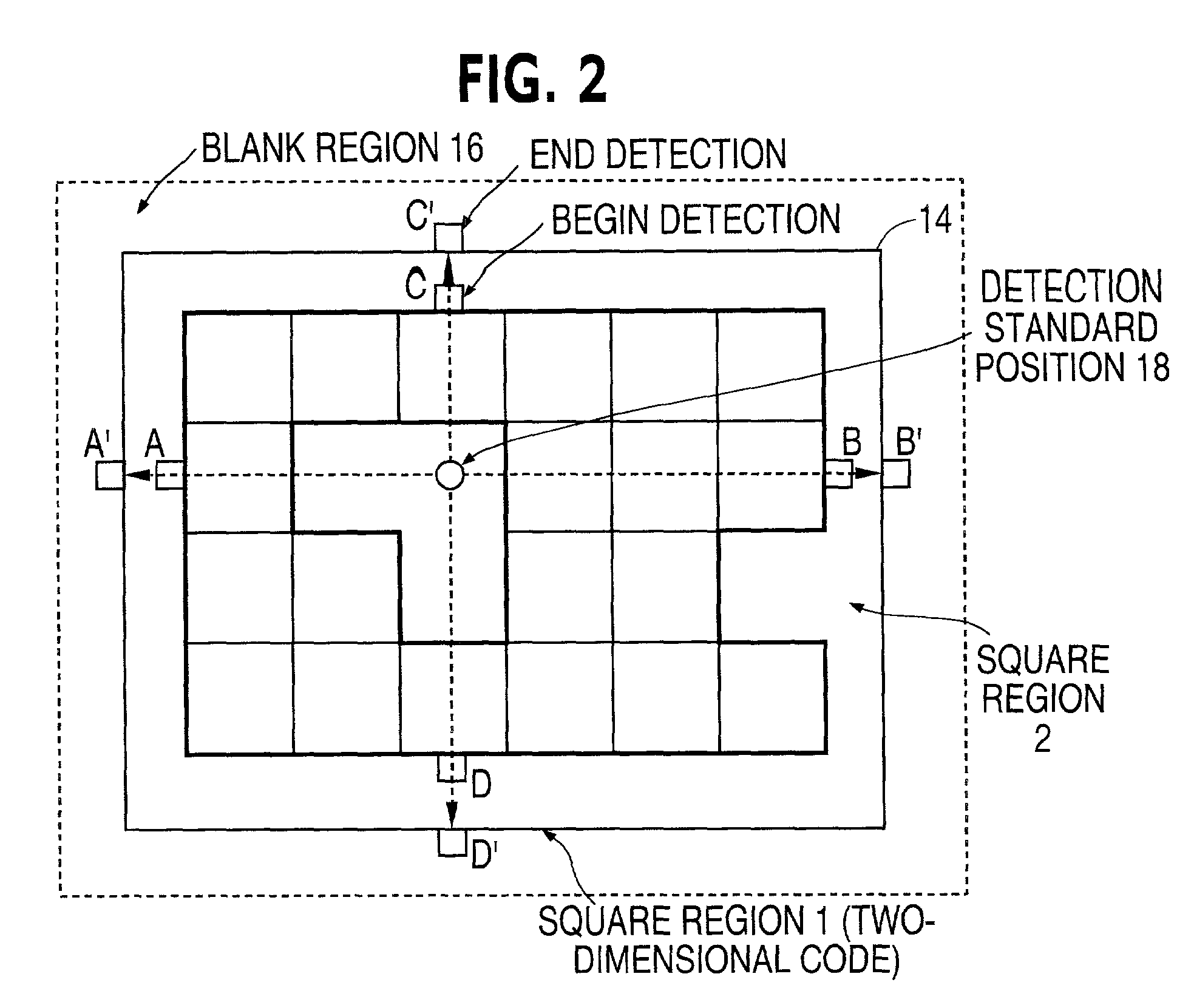Two-dimensional code extracting method
a two-dimensional code and extraction method technology, applied in image enhancement, image analysis, instruments, etc., can solve the problem that software or hardware intended to restore the data to its original state cannot restore the scanned data properly
- Summary
- Abstract
- Description
- Claims
- Application Information
AI Technical Summary
Benefits of technology
Problems solved by technology
Method used
Image
Examples
first embodiment
[0097] FIG. 9 is a process flow diagram 400 showing the process for detecting two-dimensional code regions of the present invention. The process flow diagram shown in FIG. 9 corresponds to the S103 process shown in FIG. 3.
[0098] In S401, the block information table 210 is referenced. The maximum number of contiguous blocks is set to Rmax. In the block information table 210 shown in FIG. 8, Rmax is 20.
[0099] In S402, the maximum values (Xmax and Ymax) and the minimum values (Xmin and Ymin) for the X coordinates and Y coordinates are calculated in the block where the contiguous block number matches Rmax. In FIG. 8, the coordinates of block 6 (X6, Y6) or (192, 352) are detected as the minimum values of the coordinates (Xmin and Ymin), while the coordinates of block 26 (X26, Y26) or (352, 448) are detected as the maximum values of the coordinates (Xmax and Ymax).
[0100] In S403, the square region having the coordinates of the upper left corner (Xmin-M, Ymin-N) and the coordinates of the ...
second embodiment
[0102] FIG. 11 is a process flow diagram 500 showing the process of the present invention for detecting two-dimensional code regions. The process flow diagram 500 corresponds to the process S103 in FIG. 3.
[0103] In S501, the block information table 210 is referenced and the maximum value of the contiguous block detected is set as Rmax. In FIG. 8, Rmax is 20.
[0104] In S502, the center of the region in which the contiguous block number is Rmax is set as the standard position for the detection of the two-dimensional code region. In FIG. 8, region 3 of FIG. 7 (or region A of FIG. 10) is selected as the region having the maximum contiguous block count, and a circle shown in FIG. 12 is selected as the center of the detected region. Here, the center position shown in FIG. 12 may be the center of the square region bordering on region 3 of FIG. 12.
[0105] In S503, from the detection standard position determined in S502, square blocks are scanned in upward, downward, to the left and to the rig...
PUM
 Login to View More
Login to View More Abstract
Description
Claims
Application Information
 Login to View More
Login to View More - R&D
- Intellectual Property
- Life Sciences
- Materials
- Tech Scout
- Unparalleled Data Quality
- Higher Quality Content
- 60% Fewer Hallucinations
Browse by: Latest US Patents, China's latest patents, Technical Efficacy Thesaurus, Application Domain, Technology Topic, Popular Technical Reports.
© 2025 PatSnap. All rights reserved.Legal|Privacy policy|Modern Slavery Act Transparency Statement|Sitemap|About US| Contact US: help@patsnap.com



